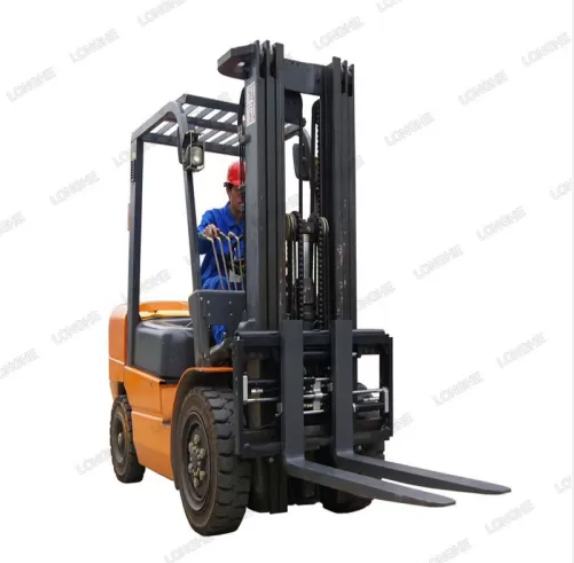With the right forklift attachments, you can turn your forklift into a multi-purpose machine, increasing productivity while saving money. Using the right forklift attachments can reduce handling time, labor, fuel consumption and product damage.
Consider these questions before purchasing your next forklift attachment to ensure you get the right one for your needs.

What is the load weight to be lifted?
Knowing the maximum load weight that a forklift attachment must lift is critical to selecting an attachment with the proper safe lifting capacity. Lifting more weight than the rated lifting weight of the forklift and forklift attachment can cause severe equipment instability, increase the risk of tipping the forklift and load, and cause significant injury or damage to the product and nearby environment or equipment.
How high must the load be lifted?
Similarly, when purchasing forklift attachments that can be lifted to the necessary height, it is important to know how high the load must be lifted. Overloading raised forklift attachments can also cause instability and increase the risk of equipment tipping over, with potentially catastrophic consequences.
What hydraulic features are required?
Standard counterbalanced forklifts often use two or three hydraulic actions to lift, lower, tilt and perform side shift functions.
A fourth hydraulic function may be required to ensure proper operation of forklift attachments, such as a dumpster rotator or tipper that uses hydraulics to rotate the dumpster or tilt it forward. To operate the attachment, your forklift must have a hydraulic function.
Do I need a permanent or temporary attachment?
Knowing whether a forklift attachment is permanent or temporary can help you decide whether to purchase one for regular use or rent one for occasional use.
Do I need to re-evaluate your forklift after attachments are installed?
After installing any forklift attachment, all forklifts must be re-rated using an updated nameplate. The safe rated capacity of the forklift will be reduced to accommodate the increased weight of the forklift attachment, thus reducing the safe lifting capacity of the equipment. Therefore, knowing the re-rated safe lifting capacity of the equipment is critical to avoid overloading.
Do I need to train operators to use the attachments?
After installing a specific forklift attachment, your operators may require additional training to ensure they can safely operate the forklift attachment.
Typical forklift attachments
Now that you have a better idea of the attachment you require for your application consider the following forklift attachments.
Fork positioners
These forklift attachments allow operators to precisely align loads by hydraulically moving the forklift carriage and tines from left to right.
Bale clamps
A hydraulically controlled clamp forklift attachment allows a forklift to safely and efficiently lift cylindrical bales of scrap metal, cotton, textiles, and wool.
Paper roll clamps
This forklift attachment is specifically designed for the paper industry. It’s a hydraulically controlled clamp for lifting and transporting paper bales with minimal damage.
Rotators
These forklift attachments can lift and rotate loads up to 360 degrees.
Forward bin inverter
With a hydraulically controlled forklift attachment, a forklift can lift and transport loads and safely empty bulk loads by tipping the bin forward.
Push/pull
This towbar attachment allows a forklift to transport trailers or related equipment safely.
Advantages of forklift attachments
Forklift attachments help reduce operator stress and increase efficiency. If you know the most popular forklift attachments, their benefits, and the industries that use them, you can easily make an informed choice and select the right forklift attachment for your individual needs.
Some of these forklift attachments are easy to install and remove, often without the need to remove the forks. As a result, one piece of equipment - your forklift - can perform multiple functions, which is a great way to reduce operating costs.
Contact Longhe to learn more
If you're still unsure of the right forklift attachment for your application, contact Longhe Intelligent Equipment Manufacturing today. Our material handling experts can help you choose the most appropriate solution. Or, please visit our website for more information on our offers.

